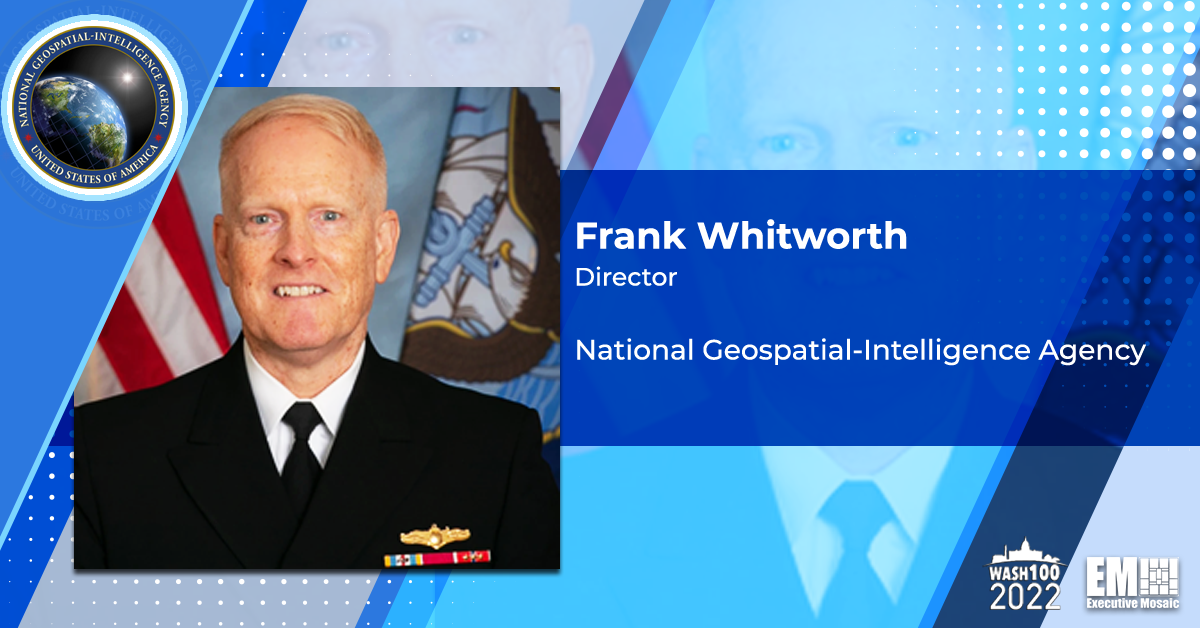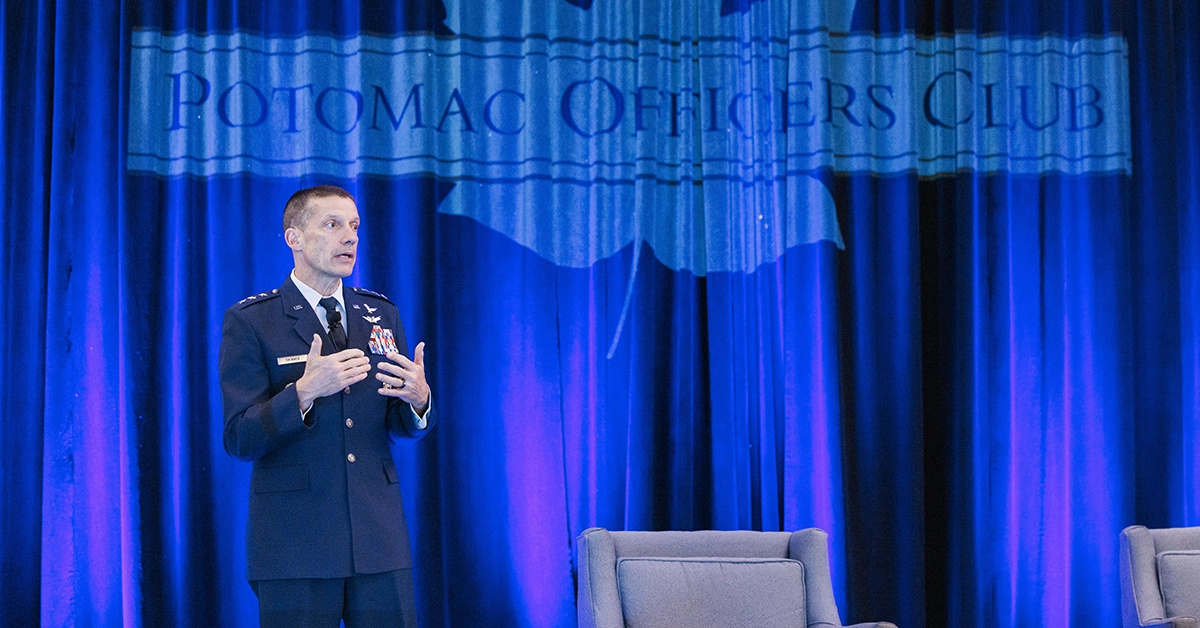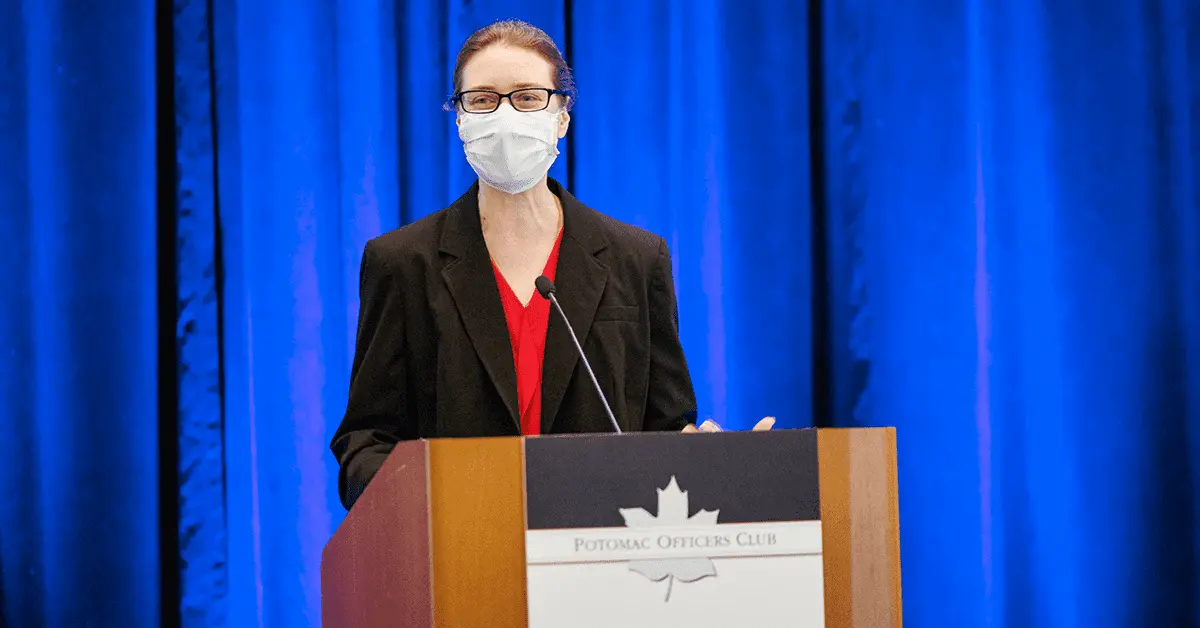Once Frank Whitworth began his duties as the eighth director of the National Geospatial-Intelligence Agency, he asked his team what their desired goal was for the end state, or ultimate mission completion, of the organization.
They replied with a resounding, ambitious answer: “GEOINT [or geointelligence] supremacy.”
At first, Whitworth was a bit taken aback by the boldness of the NGA leadership’s claim but quickly embraced the mindset and it motivated him to simplify and streamline the agency’s end state objectives to also include accelerated effects and decision advantage. The former means having effects, or at least, the necessary capabilities and technologies to achieve desired effects, ready to go at a moment’s notice for a given mission, a preparation which bears a “huge geospatial dimension,” according to Whitworth.
As for the decision advantage component, Whitworth, a 2022 Wash100 Award winner, remarked that this entails “ensuring that the decision maker at the right time—probably at the last moment—has everything from a geospatial perspective he or she needs.”
The NGA director shared these insights during his keynote address to the Potomac Officers Club’s 8th Annual Intelligence Summit at the Ritz-Carlton Hotel in Tysons Corner, Virginia on Monday.
Whitworth assumed his current role at NGA on June 3, at which time he said he introduced five new strategic objectives for the agency, some of which he elaborated on during his speech and some of which he left as self explanatory.
- Enhance operational readiness
This involves emphasizing the gathering of indications and warning or I&W data as well as targeting practices. Targeting concerns utilizing advanced analytics to seek out individuals and organizations who are considered threats to national interest and security.
- Attract and develop a highly skilled, diverse and inclusive workforce
- Build resiliency by strengthening partnerships
Whitworth defined this goal broadly, stating that it applied to cross-agency collaboration and alliances with other nations, as well as private sector partnerships, which was of particular interest to those in attendance, as the majority of the Intel Summit’s audience were government contracting executives.
On this note, later in his address, the NGA director elaborated on several goals the agency has for interacting and creating a mutually beneficial partnership with industry. These tenets include “proactively engag[ing] with industry as a function of doing business to discover opportunities in emergent technologies that would further deepen, reinforce, strengthen our leadership role within the GEOINT space.” Additionally, Whitworth shared that the NGA intends to keep an eye on burgeoning technical and scientific strategies and tools that will aid its mission going forward, which industry partners will obviously be instrumental in.
- Strengthen stewardship of GEOINT resources
Under this endeavor, Whitworth said the NGA will ensure that, during the season of congressional mark-ups, the review and revision by Congress (aka their “board of directors) of proposed legislation, it will be made clear that supporting the care for GEOINT resources is a top priority. Whitworth noted that these mark-ups will occur routinely across all Department of Defense or Fourth Estate agencies
- Accelerate GEOINT technology, acquisition and integration
In what may come as a surprise to some and not at all to others, artificial intelligence and machine learning usage in the NGA has been on the rise in recent years, mainly in order to process the “deluge” of data the organization is collecting and evaluating on a daily basis.
“NGA’s goal is to automate routine GEOINT tasks and corporate business processes and take advantage of technology from academic, corporate, and government military partners to create strategic capabilities with mission advantage,” Whitworth explained.
The vice admiral went on to say that he is steering the NGA to leverage AI and ML to assist the military in responding to natural disasters such as Hurricane Ian, which he said netted a much faster and more effective response than 2021’s Hurricane Ida, despite the latter being considerably more severe.







